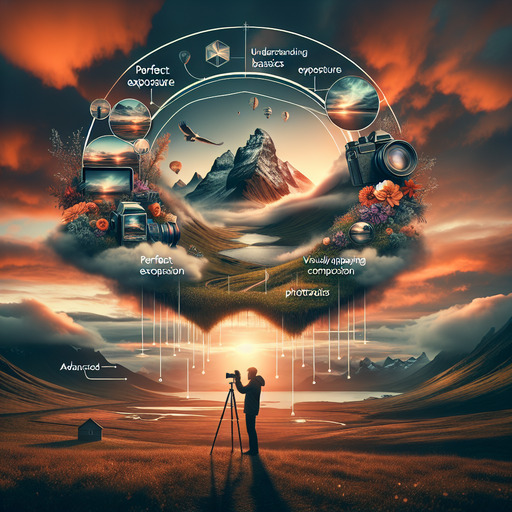
-
Table of Contents
- Mastering Photography: Tips and Techniques for Stunning Shots
- Understanding the Basics of Photography
- Exposure: The Key to Perfect Shots
- Composition: Crafting Visually Appealing Images
- Advanced Photography Techniques
- Portrait Photography: Capturing Emotions
- Landscape Photography: Embracing Nature’s Beauty
- Editing: Enhancing Your Photos
- Basic Editing Techniques
- Conclusion
- Questions and Answers
Mastering Photography: Tips and Techniques for Stunning Shots
Photography is more than just capturing moments; it’s about telling stories through images. Whether you’re a budding photographer or a seasoned professional, understanding the nuances of photography can elevate your work to new heights. In this guide, we’ll explore essential photography tips, techniques, and insights to help you capture breathtaking images.
Understanding the Basics of Photography
Before diving into advanced techniques, it’s crucial to grasp the fundamentals of photography. These basics form the foundation upon which all great photography is built.
Exposure: The Key to Perfect Shots
Exposure is the amount of light that reaches your camera sensor, and it significantly impacts the quality of your photos. Mastering exposure involves balancing three elements:
- Aperture: Controls the depth of field. A wider aperture (lower f-stop) creates a blurred background, ideal for portrait photography.
- Shutter Speed: Determines how long the camera’s shutter remains open. Faster speeds freeze motion, while slower speeds capture movement.
- ISO: Adjusts the camera’s sensitivity to light. Higher ISO settings are useful in low-light conditions but can introduce noise.
Composition: Crafting Visually Appealing Images
Composition is the art of arranging elements within a frame. Effective composition can transform an ordinary scene into a captivating image.
- Rule of Thirds: Divide your frame into a 3×3 grid and position key elements along the lines or intersections for balanced images.
- Leading Lines: Use natural lines to guide the viewer’s eye through the photo, adding depth and interest.
- Framing: Incorporate natural frames like windows or arches to draw attention to the subject.
Advanced Photography Techniques
Once you’ve mastered the basics, it’s time to explore advanced techniques that can set your work apart.
Portrait Photography: Capturing Emotions
Portrait photography is about capturing the essence of a person. Here are some tips to enhance your portrait shots:
- Lighting: Use soft, diffused lighting to create flattering portraits. Natural light or a softbox can work wonders.
- Posing: Guide your subject into natural poses that reflect their personality. Encourage them to relax for more authentic expressions.
- Background: Choose a simple background to keep the focus on the subject.
Landscape Photography: Embracing Nature’s Beauty
Landscape photography captures the grandeur of the natural world. To create stunning landscapes, consider the following:
- Golden Hour: Shoot during the golden hour (shortly after sunrise or before sunset) for soft, warm lighting.
- Foreground Interest: Include elements in the foreground to add depth and context to your images.
- Weather Conditions: Embrace different weather conditions for unique and dramatic shots.
Editing: Enhancing Your Photos
Post-processing is an essential part of modern photography. Editing can enhance your images and bring your creative vision to life.
Basic Editing Techniques
Start with these basic editing techniques to improve your photos:
- Crop and Straighten: Adjust the composition and alignment for a more polished look.
- Adjust Exposure: Fine-tune the brightness, contrast, and highlights to achieve the desired mood.
- Color Correction: Balance colors to ensure natural and vibrant tones.
Conclusion
Photography is a journey of continuous learning and experimentation. By mastering the basics, exploring advanced techniques, and refining your editing skills, you can create images that captivate and inspire. Remember, the best way to improve is to keep shooting and experimenting with different styles and techniques.
For more in-depth information on photography techniques, you can visit Wikipedia’s Photography Page.
Questions and Answers
Q1: What is the best camera for beginners?
A1: The best camera for beginners is often a DSLR or mirrorless camera with manual controls, such as the Canon EOS Rebel T7 or the Sony Alpha a6000. These cameras offer flexibility and room to grow as you learn more about photography.
Q2: How can I improve my photography skills?
A2: Practice regularly, study the work of professional photographers, and experiment with different techniques and styles. Joining photography workshops or online courses can also provide valuable insights and feedback.
Q3: What software is best for photo editing?
A3: Adobe Lightroom and Photoshop are industry standards for photo editing. They offer a wide range of tools for both basic and advanced editing. For beginners, free software like GIMP or online tools like Canva can also be effective.
If you’re interested in learning more about photography or our services, please reach out to us via our contact page.